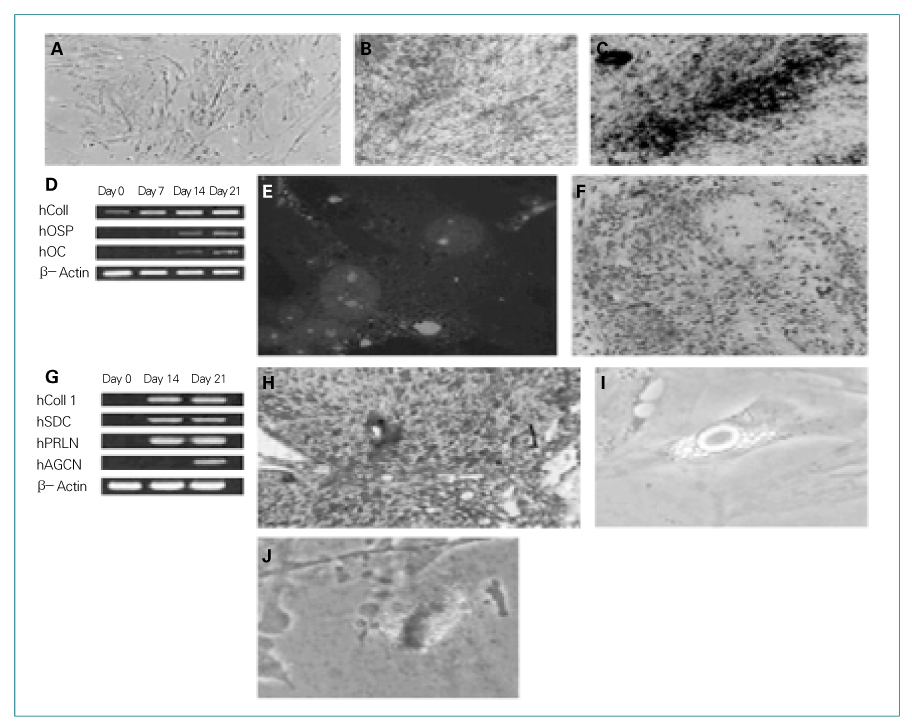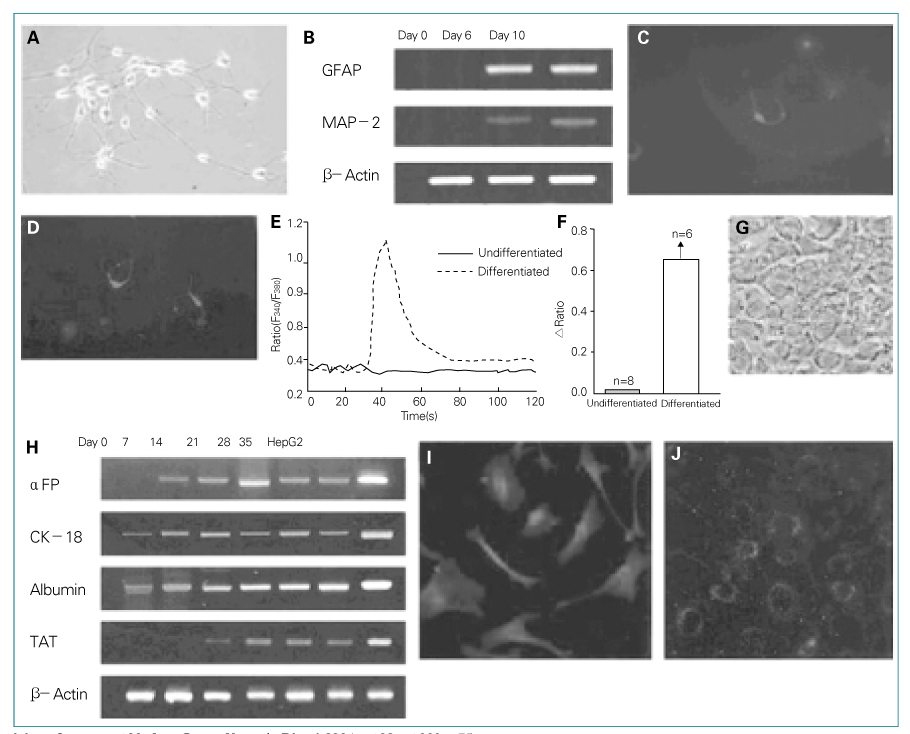J Korean Med Assoc.
2004 Oct;47(10):957-965. 10.5124/jkma.2004.47.10.957.
Use of Cord Blood Stem Cells in Cell Therapy
- Affiliations
-
- 1Division of Transfusion Medicine and Cellular Therapy, Yonsei University College of Medicine, Severance Hospital, Korea. hyunok1019@yumc.yonsei.ac.kr
- KMID: 2183533
- DOI: http://doi.org/10.5124/jkma.2004.47.10.957
Abstract
- The possibility to use cord blood stem cells in clinical transplantations has been recently realized. Cord blood was introduced as an alternative source to hematopoietic tissue for allogeneic transplantation following the successful use of a cord blood transplant in a child with Fanconi anemia. So far, more than 5,000 umbilical cord blood (UCB) transplants have been performed worldwide. In Korea, 100 cases of cord blood trans plantation have been done at 11 cord blood transplantation centers by November 2003. Another important field to explore is the capacity of stem cells in cord blood to differentiate into mesenchymal progenitor cells, which are capable of differentiating into cells of different connective tissue lineages such as bone, cartilage, and adipose tissues, and thus they are the best candidate for tissue engineering of musculoskeletal tissues. Although it is still controversial whether UCB contains mesenchymal stem cells, UCB can serve as an alternative source of mesenchymal stem cells to bone marrow and should not be regarded as a medical waste.
Keyword
MeSH Terms
Figure
Reference
-
1. Broxymeyer HE, Douglas GW, Hangoc G, Cooper S, Bard J, Boyse EA, et al. Human umbilical cord blood as a potential source of transplantable hematopoietic stem/progenitor cells. Proc Natl Acad Sci USA. 1989. 86:3828–3832.
Article2. Lee OK, Kuo TK, Chen WM, Lee KD, Hsieh S, Chen TH. Isolation of multipotent mesenchymal stem cells from umbilical cord blood. Blood. 2004. 103:1669–1675.
Article3. Barker JN, Wagner JE. Umbilical cord blood transplantation: current state of the art. Curr Opin Oncol. 2002. 14:160–164.
Article4. Devine SM, Lazarus HM, Emerson SG. Clinical application of hematopoietic progenitor cell expansion: current status and future prospects. Bone Marrow Transplant. 2003. 31:241–252.
Article5. Gluckman E, Broxymeyer HA, Auerbach AD, Friedman HS, Douglas GW, Thierry D, et al. Hematopoietic reconstitution in a patient with Fanconi\'s anaemia by means of umbilical-cord blood from an HLA-identical sibling. N Engl J Med. 1989. 321:1174–1178.
Article6. Wagner JE, Verfaillie CM. Ex vivo expansion of umbilical cord blood hemopoietic stem and progenitor cells. Exp Hematol. 2004. 32:412–413.
Article7. Japanese Cord Blood Bank Network (JCBBN). www.j-cord.gr.jp.9. Lee YH, Kook H, Koo HW, Kim YJ, Kim HO, Chung N, et al. Current and future of cord blood banking and transplantation in Korea. 2004. In : The 8th Tokyo International Symposium in Cord Blood Transplantation; 9.10. Comparison of outcomes of unrelated bone marrow and umbilical cord blood transplants in children with hematologic malignancies : single center study in Korea. 2004. In : The 8th Tokyo International Symposium in Cord Blood Transplantation; 9.11. Gluckman E. Ex vivo expansion of cord blood cells. Exp Hematol. 2004. 32:410–412.
Article12. Broxmeyer HE, Srour EF, Hangoc G, Cooper S, Anderson SA, Bodine DM. High-efficiency recovery of functional hematopoietic progenitor and stem cells from human cord blood cryopreserved for 15 years. Proc Natl Acad Sci USA. 2003. 100:645–650.
Article13. Gluckman E, Rocha V, Boyer-Chammard A, Locatelli F, Arcese W, Chastang C, et al. Outcome of cord-blood transplantation form related and unrelated donors. Eurocord Transplant Group and the European Blood and Marrow Transplantation Group. N Engl J Med. 1997. 337:373–381.
Article14. Rocha V, Wagner JE Jr, Sobocinski KA, Klein JP, Zhang MJ, Gluckman E, et al. Graft-versus-host disease in children who have received a cord-blood or bone marrow transplant from an HLA-identical sibling. N Engl J Med. 2000. 342:1846–1854.
Article15. Burgio GR, Gluckman E, Locatelli F. Ethical reappraisal of 15 years of cord-blood transplantation. Lancet. 2003. 361:250–252.
Article16. Bierback K, Kern S, Kluter H, Eichler H. Critical parameters for the isolation of mesenchymal stem cells from umbilical cord blood. Stem Cells. 2004. 22:625–634.
Article17. Wexler SA, Donaldson C, Denning-Kendall P, Rice C, Bradley B, How JM. Adult bone marrow is a rich source of human mesenchymal "stem" cells but umbilical cord and mobilized adult blood are not. Br J Heamatol. 2003. 121:368–374.
Article18. Erices A, Conget P, Minguell J. Mesenchymal progenitor cells in human umbilical cord blood. Br J Haematol. 2000. 109:235–242.
Article19. Mareschi K, Biasin E, Piacibello W, Aglietta M, Madon E, Fagioli F. Isolation of human mesenchymal stem cells: bone marrow versus umbilical cord blood. Haematologica. 2001. 86:1099–1100.20. Goodwin H, Bicknese AR, Chien SN, Bogucki BD, Quinn CO, Wall DA. Multilineage differentiation activity by cells isolated from umbilical cord blood: expression of bone, fat and neural markers. Biol Blood Marrow Transplant. 2001. 7:581–588.
Article21. Yu M, Xiao Z, Shen L, Li L. Mid-trimester fetal blood-derived adherent cells share characteristics similar to mesenchymal stem cells but full-term umbilical cord blood does not. Br J Hematol. 2004. 124:666–675.
Article22. Bontkes HJ, DE Gruijil TD, Schuurhuis GJ, Scheper RJ, Meijer CJ, Hooijberg E. Expansion of dendritic cell precursors from human CD34+ progenitor cells isolated from healthy donor blood: growth factor combination determines proliferation rate and functional outcome. J Leukoc Biol. 2002. 72:321–329.23. Bracho F, van de Ven C, Areman C, Hughes RM, Davenport V, Cairo MS, et al. A comparison of ex vivo expanded DCs derived from cord blood and mobilized adult peripheral blood plastic-adherent mononuclear cells: decreased alloreactivity of cord blood DCs. Cytotherapy. 2003. 5:349–361.
Article24. Kim HO. Expansion and differentiation of dendritic cells in clinical scale from human cord CD34+ progenitor cells. 2004. In : Yonsei Biomedical Symposium; 24–28.26. Shin JW, Lee DW, Kim MJ, Song KS, Kim HS, Kim HO. Isolation of endothelial progenitor cells from cord blood and induction of differentiation by ex vivo expansion. Yonsei Med J. 2005. 46:260–267. (in submission).
Article27. Kim HS, Lim JB, Min YH, Lee ST, Lyu CJ, Kim HO. Ex vivo expansion of human umbilical cord blood CD34 cells in a collagen bead-containing 3-dimensional culture system. Int J Hematol. 2003. 78:126–132.
Article28. Ha Y, Choi JU, Yoon DH, Yeon DS, Lee JJ, Cho YE, et al. Neural phenotype exression of cultured human cord blood cells in vitro. Neuroreport. 2001. 12:3523–3527.
Article
- Full Text Links
- Actions
-
Cited
- CITED
-
- Close
- Share
- Similar articles
-
- Clinical utilization of cord blood over human health: experience of stem cell transplantation and cell therapy using cord blood in Korea
- Cord Blood-Current Status and Perspective
- Storage and use of cord blood
- Stem Cell Transplantation in Umbilical Cord Blood(I) Expansion Effects of Stem Cells in Umbilical Cord Blood with Various Hematopoietic Growth Factors
- Current Status for Cord Blood Transplantation and Public Cord Blood Bank in Korea






